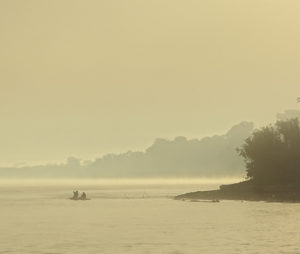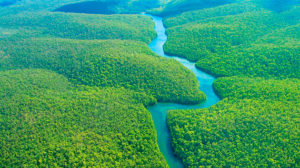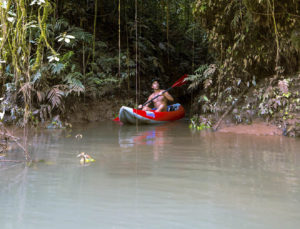
The Amazon River can be said without too much exaggeration to be one of the many amazing wonders of the world. The Amazon River is the mother and sustainer of the Amazon rain forest. The River is considered to be the largest drainage system in the world by the volume of discharge water in its basin. It is also the second-longest river in the word, second only to the river Nile.
 The first European to enter the Amazon was Francisco de Orellana. He was a cousin to Francisco Pizarro who was a famous conquistador. In the year 1541, Orellana set off in search of the mythical El Dorado (the city of gold and wealth) which took him downriver through the jungles of the Amazon forest. He and his men had to withstand lots of hostilities from the tribesmen, as many of the locals in the area were not willing to leave their home for the European explorers. The explorers started killing anyone that refused to leave their path.
The first European to enter the Amazon was Francisco de Orellana. He was a cousin to Francisco Pizarro who was a famous conquistador. In the year 1541, Orellana set off in search of the mythical El Dorado (the city of gold and wealth) which took him downriver through the jungles of the Amazon forest. He and his men had to withstand lots of hostilities from the tribesmen, as many of the locals in the area were not willing to leave their home for the European explorers. The explorers started killing anyone that refused to leave their path.
Orellana followed the Napo until he arrived at its confluence with the Amazon. He continued to head east until 1542 when the group emerged in the Atlantic in August. He therefore, completed what later became known as the first ever navigation of the Amazon River in its entirety. At least as recorded by a white man.
It was when he arrived back in Spain and impressed the court with the tales of his battle with tribesmen and women that were formidable, tall, strong and fearless, almost like the Amazon warriors of the Ancient Greek mythology, that the region and river were eventually given the name, AMAZON.

In Portuguese, it is called Rio Amazonas, the total length of the river, when measured from the headwaters of the Ucayali Apurimac river system in the southern part of Peru, is estimated to be at least 6,400 km (4,000 miles). This makes it just a tiny bit shorter than the River Nile of Egypt which is the longest river in the world (6,650 km). However, to put it into perspective the current length of the Nile is almost equivalent to the distance from New York to Rome.
The River is the widest river in the world. The width spans a length of 1.6 to 10 kilometers (1 to 6.2 miles) at the low stage, however, it expands to 48 kilometers in the wet season which translates to about 3o miles.
 The Rainforest, which is traversed by one of the mightiest rivers in the world, shares its borders with nine Nations. The Rainforest boasts a very large expanse of flora which was fertilized by lots of African sand many years ago, which makes it the world’s most important and impressive forest. The Amazon river has since then been found to be more than just a powerhouse for the forest as it dumps up to one-fifth of the water that runs off the earth’s surface in its basin, it has been found to be a very important part of our ecosystem. The Amazon River has also since been credited with flowing of up to 20% of the total fresh water on earth into the Atlantic Ocean.
The Rainforest, which is traversed by one of the mightiest rivers in the world, shares its borders with nine Nations. The Rainforest boasts a very large expanse of flora which was fertilized by lots of African sand many years ago, which makes it the world’s most important and impressive forest. The Amazon river has since then been found to be more than just a powerhouse for the forest as it dumps up to one-fifth of the water that runs off the earth’s surface in its basin, it has been found to be a very important part of our ecosystem. The Amazon River has also since been credited with flowing of up to 20% of the total fresh water on earth into the Atlantic Ocean.